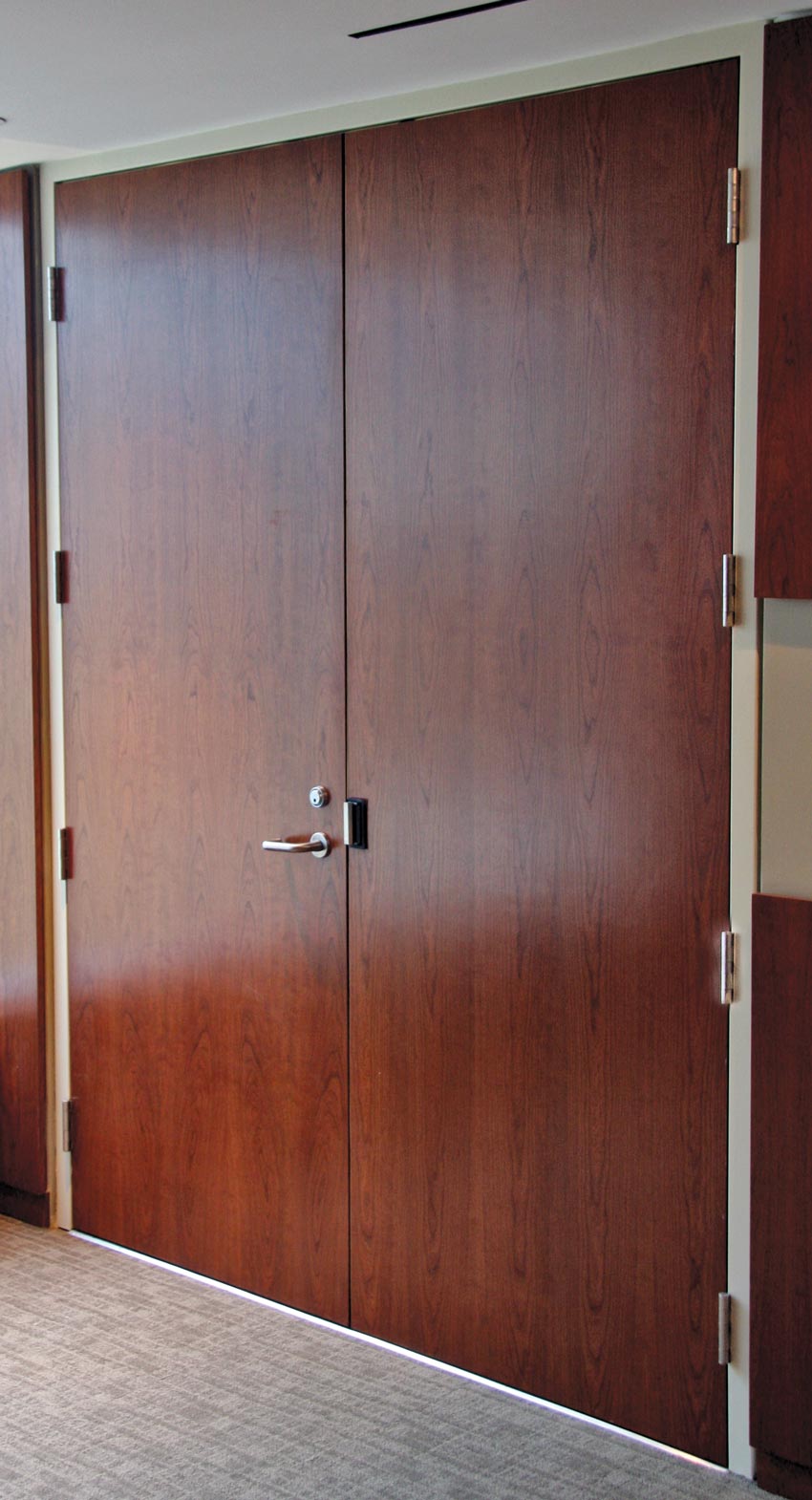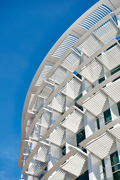Student Performance in 21st Century Schools
Naturalness and Sound
Although not one of the top six indicators, sound as part of the natural environment of a school was addressed in the research study by Barrett et al. This corroborates with an increasing number of design professionals who have focused on good acoustics, and even more so on acoustic control between spaces, as a key factor connected to learning outcomes in school environments. Independent programs such as LEED for Schools or Collaborative for High-Performance Schools (CHPS) also encourage the use of high-performance acoustic environments in schools. Indeed, the LEED for Schools program now contains both prerequisite and credit options for good acoustics in schools, with a particular emphasis on controlling sound between the spaces where they originate and the spaces where they end up. This is true for many wall assemblies in schools, but one area where this is sometimes overlooked is in the openings in walls, such as windows and doors. Sound energy will move through those openings easily if they are the acoustic weak point of a wall. Certain door companies recognize this and offer the highest-quality specialized door assemblies in both steel and wood that are tested and certified to industry performance standards.
The measure of acoustic performance for doors is found in sound transmission class (STC) ratings based on tests in accordance with ASTM E-330: Standard Test Method for Structural Performance of Exterior Windows, Doors, Skylights, and Curtain Walls by Uniform Static Air Pressure Difference and ASTM E-413: Classification for Rating Sound Insulation. Fortunately, it is possible to specify doors and frame assemblies with high STC ratings based on these testing standards. However, that is not where things end. The door, frame, and related door components all need to be looked at and addressed together in order to achieve satisfactory results. To do so using individual field-installed products and components is possible in theory, but in practice, it is extremely difficult to achieve. The more direct solution is to specify complete door and window frame systems that are manufactured from a single source such that they are coordinated and independently tested together for sound control. In this way, STC ratings can be achieved in a door that can approach or even match those achieved in the walls where the doors are being installed. If separate doors, frames, seal systems, glazing, and hardware are all supplied from different manufacturers, it is nearly certain that they have not been tested as a system to determine STC ratings, and it is even less likely that they can be installed across a school building to consistently attain the acoustic performance needed.
High-performance door and window products also address safety in schools, particularly in terms of tornado-resistant openings in exterior walls. Many of the same attributes that lead to an acoustically superior door also help with tornado resistance when tested in accordance with FEMA 361 & 320 and ICC-500 standards. The goal is to provide doors that enhance the quality of the learning environment and provide critical life safety protection to the occupants. Many schools in certain areas of the country experience the threat of tornados on a more regular basis than they would care for, which has given rise to incorporating tornado safe rooms in schools. Door frame and hardware assemblies along with window frame and glazing assemblies on the perimeter of those rooms need to be capable of resisting the forces imposed on them and protecting the critical life safety of the inhabitants. Properly specified, manufactured, and installed high-performance doors can do exactly that.

Photo courtesy of AMBICO Limited
Acoustic wood doors in a steel frame all coordinated and supplied by a single manufacturer can be carefully controlled and tested to achieve high performance, such as this door that is verified at STC 51.
Naturalness, Temperature, and Air Quality
Similar to acoustics, temperature and air quality were looked at in the research study we have been following. Some of the indicators of a successful classroom environment suggested that the degree to which the pupils feel comfortable during different seasons and the degree to which manual adjustments can be made are important. This plays directly into the type of cooling and heating system that is used and the ability for it to be responsive to different needs within a school.
Conventional HVAC systems have served the needs of most buildings for many decades. However, achieving high levels of comfort, versatility, and performance often requires going beyond the conventional. Considerable success has been found in the use of variable refrigerant flow (VRF) systems, which operate in a zoned manner as an energy-efficient method of providing improved comfort control to indoor environments. Zones are defined as single- or multiple-room spaces that are conditioned to a set temperature and are operated independently from other rooms within the same structure.
VRF systems move conditioned refrigerant directly to the zone to be cooled or heated, allowing the temperature of that area to be more precisely controlled. They can simultaneously cool some zones while heating others or just provide conditioning to zones that are in use. VRF systems provide educational buildings with efficient, personalized comfort and can meet the needs of a wide variety of spaces within schools—classrooms, lecture halls, administrative offices, athletic facilities, and more. Further, the quiet operation of VRF systems makes them ideal for environments like libraries and classrooms where students need to focus on their studies. They can also be used with energy recovery ventilators (ERVs) that exhaust outside air to rid school buildings of toxins, odors, bacteria, and other potentially harmful contaminants. ERVs also improve HVAC system efficiency by preheating or cooling incoming outside air with energy recovered from the exhaust air. All of that adds up to a healthier indoor environment for students and staff. For architects, VRF systems with ERVs mean flexibility in design, quiet operation, and the ability to modify the systems as needs change during the design or life cycle of the building.

Photos courtesy of Joe Loehle Photography
Variable refrigerant flow (VRF) cooling and heating systems blend easily into classrooms, offering greater design flexibility, more precise comfort control, and quiet operation.
Notice

www.ambico.com

www.asi-accuratepartitions.com

www.c-sgroup.com/floormations-entrance-floors

www.c-sgroup.com/sun-controls

www.dormakaba.com

www.glengery.com

guardianglass.com

www.nanawall.com/applications/education

mitsubishipro.com/ready









